I received a comment questioning if the 1987 Market Crash was detected by the NH-NL data following my blog post titled Nail Market Tops and Bottoms by Doing this, Guaranteed!.
When viewing the NH-NL data, much of the first half of 1987 was stable. Readings were mostly positive with a few bouts of light pink (negative readings) in April and May. Although there was some negativity in the NH-NL readings, the 30-d Differential (Diff) did not turn negative in April 1987. It did however turn negative for seven consecutive days in May 1987. The number of days with 100+ New Lows for the year up until the end of May was two (one on April 14, 1987 and one on May 20, 1987, 112 and 109 NL’s respectively).
July 1987 NH-NL Readings for NYSE:
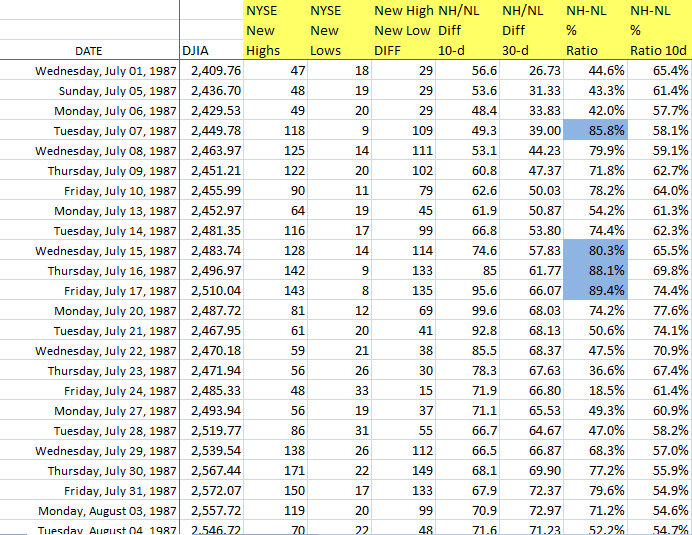
By June, the readings were back to the positive side, averaging a +70 Differential for the summer (June, July and August) with the only negative daily reading coming on June 2, 1987 at 21 NH’s and 28 NL’s or a negative 7 Differential. The next negative day did not occur until September 2, 1987 with a 24-31 reading or negative 7 Differential.
August 1987 NH-NL Readings for NYSE:
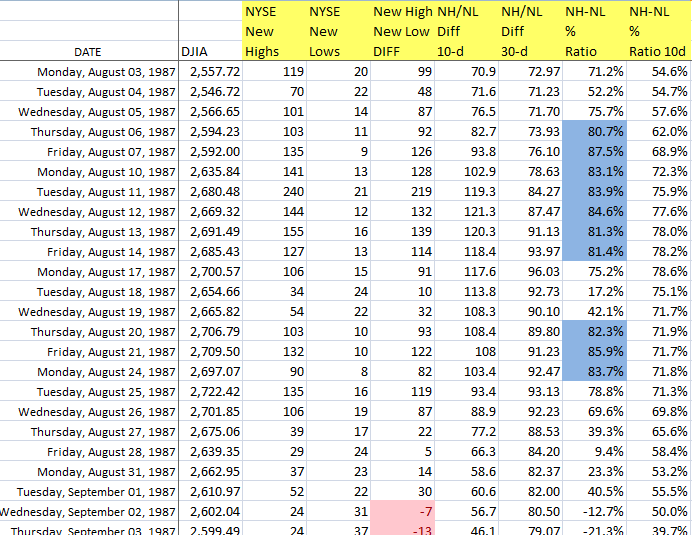
Prior to dissecting the NH-NL data, I must iterate that all SEASONED investors should know that they must follow PRICE and VOLUME first and that the DJIA was flashing distribution days throughout the month of September. The NH-NL red flags only back-up the story that price and volume is telling (the NH-NL confirms what the market is doing). In addition to the DJIA showing multiple distribution days, the index closed below its 50-d MA in September. It attempted to cross back above the moving average late in the month but quickly crashed back below it in early October, prior to the crash.
DJIA 1987 – Distribution & NH-NL Red Flags:

The first big NH-NL clue signaling weakness came in September 1987. For the month, 18 of the 21 trading days recorded a negative Differential reading (the month averaged a negative 15 Diff, marking the weakest month of readings since July 1984 when every day was negative).
September 1987 NH-NL Readings for NYSE:
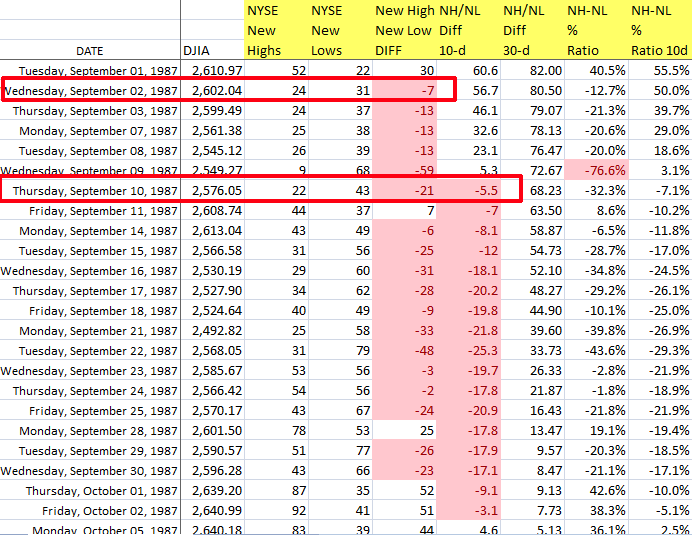
The average daily Differential reading for the first 8 months of the year, through August 31, 1987 was +69.9. As mentioned, the average Diff reading in September 1987 was -15. By contrast, the average reading for October turned out to be a whopping negative 226. The average reading from October 1st through October 16th was negative 70, a complete 180 from the first 8 months.
Below are the key dates that pop out waiving red flags for the longer term trader:
- On September 2, 1987: The NH-NL Differential (Diff) goes red
- On September 10, 1987: The 10d Average Diff goes red
- On October 7, 1987: The 30d diff goes red
- On October 12, 1987: The 1st 100+ New Low (NL) day is recorded
- On October 16, 1987: The NH-NL Diff goes DARK RED which means more than 300+ NL’s
The October 16, 1987 NH-NL reading of 5-327 or a negative 322 was the weakest NL reading since Monday, September 28, 1981 when 590 NL’s were recorded (with only 1 new high).
This was a MAJOR RED FLAG – but was it too late because data is recorded “end of day”?
We all know what happened the following Monday – markets crashed and NH-NL reading settled in at 10 NH’s and 1,068 NL’s for a -1,058 Diff. Tuesday, October 20, 1987 was even worse as the Diff closed at 1 NH’s and 1,174 NL’s for a Diff reading of -1,173.
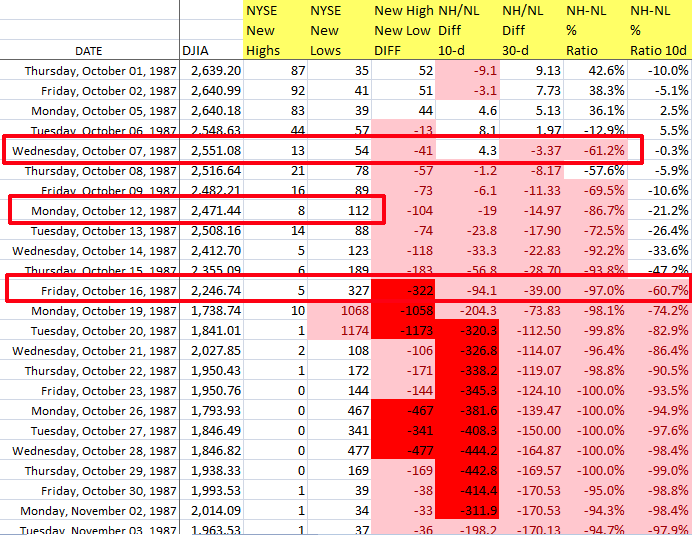
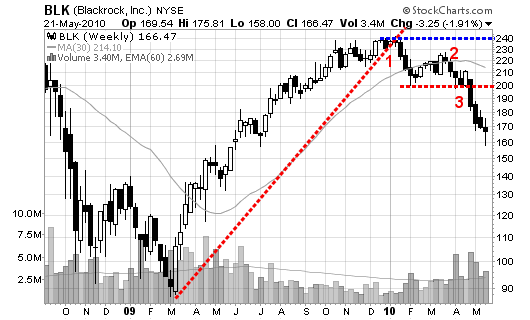
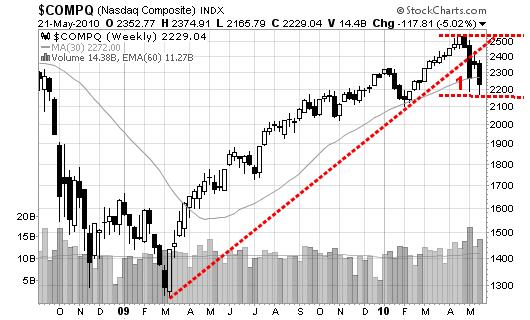
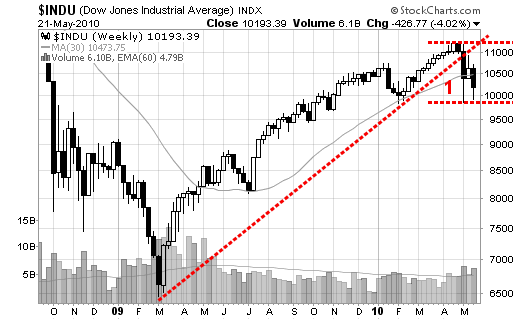
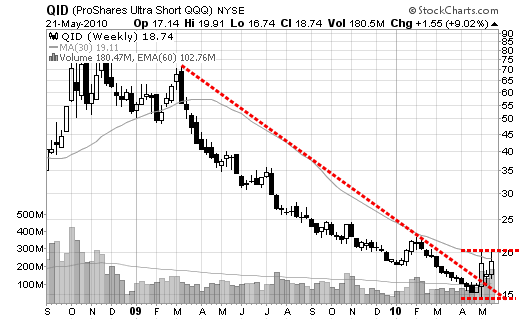
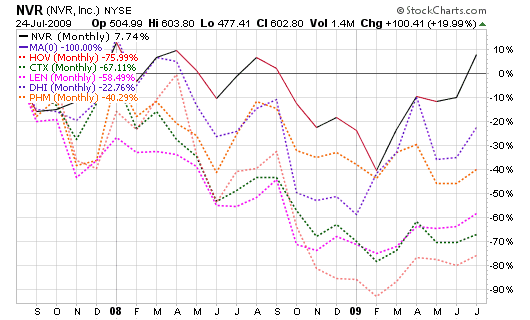
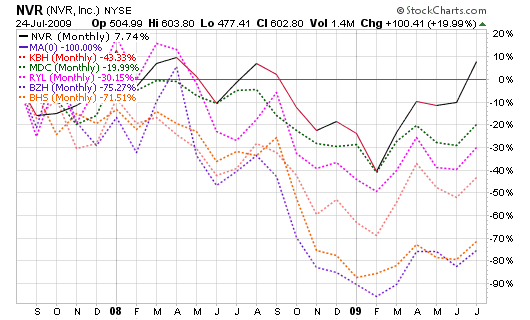
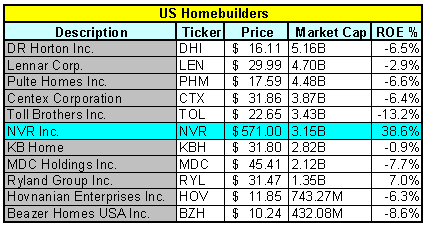
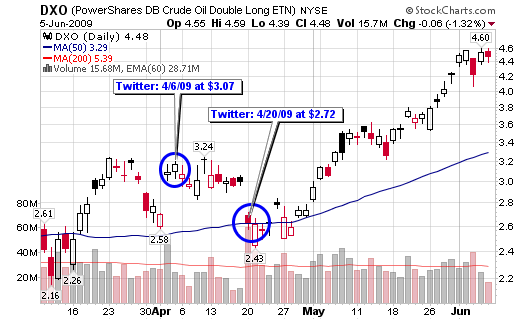
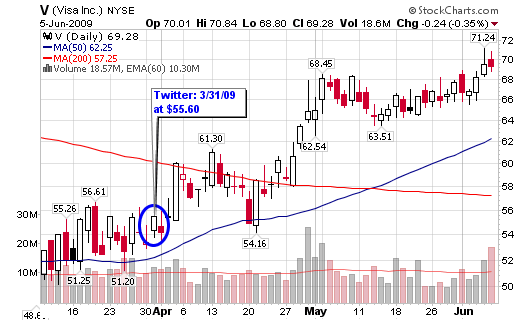
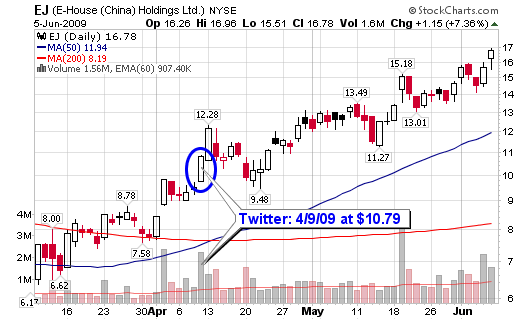

Connect with Me